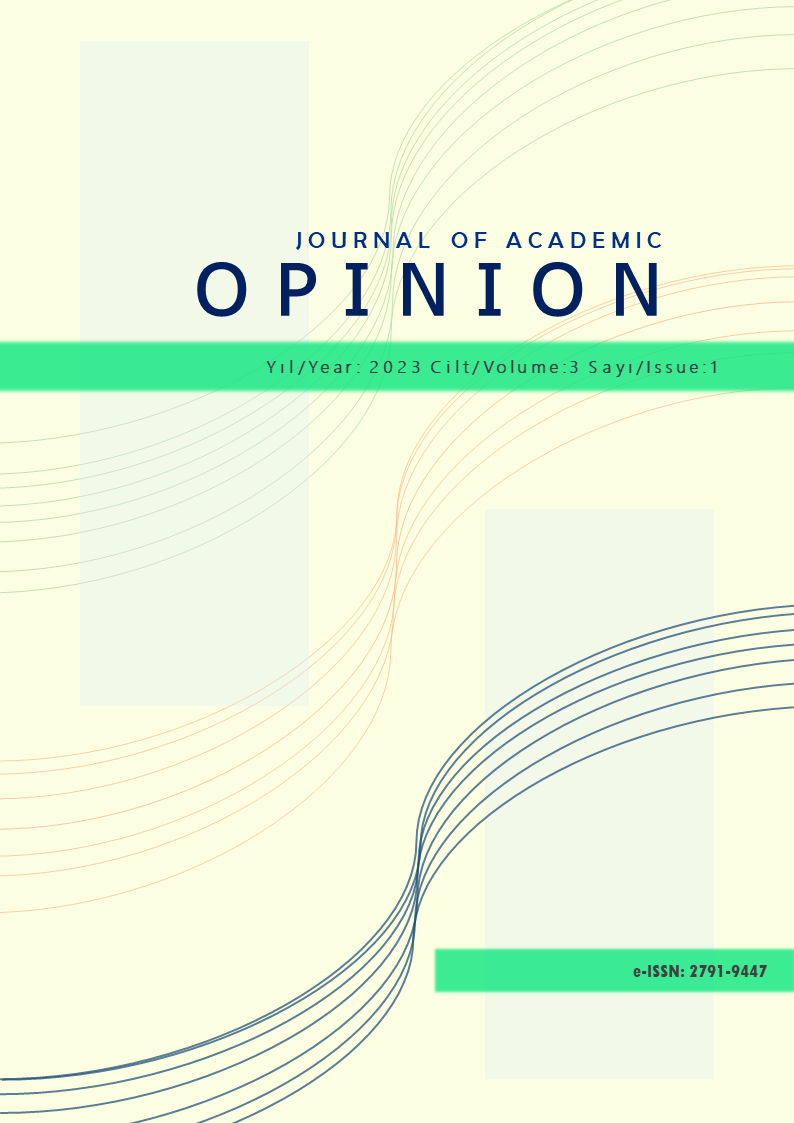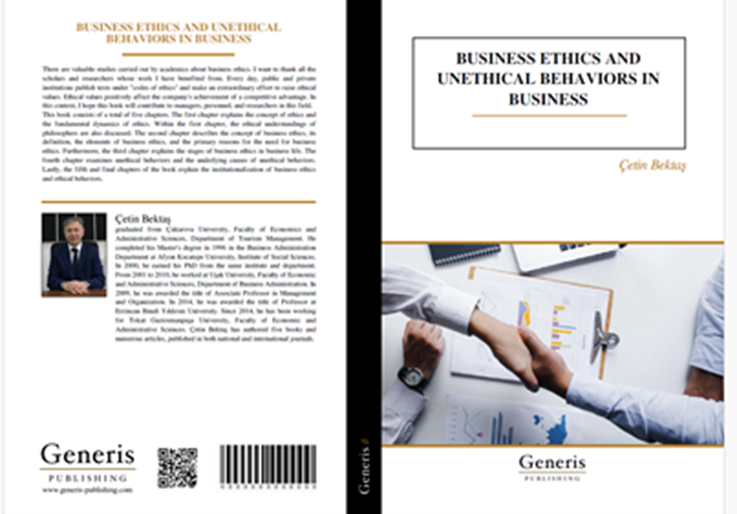Bayesian Approach to the Nonlinear Structural Equation Model
Bayesci İstatistik
DOI:
https://doi.org/10.5281/zenodo.8079265Keywords:
Bayesian Approach, Gibbs Sampler, Structural Equation ModelAbstract
Recent studies have found that adding nonlinear relationships of latent variables to the model is very useful for better causality. Nonlinear relationships allow the questioning of many hypotheses in the social and behavioral sciences, as well as providing solid theories in this field. Studies for nonlinear model types and their estimation techniques focus on the use of the Bayesian approach. However, this approach cannot be used through commonly used programs. For this reason, there is very little practical application in this field. The aim of this study is to popularize the use of the Bayesian approach for nonlinear models. In order to achieve this aim, three main headings have been established. In the first title, nonlinear model types and their estimation techniques are given. In the second title, the sources of motivation for the approach are mentioned together with the literature findings suggesting the reason for using the Bayesian approach. In the third title, there is how the Bayesian approach works with a principle.
References
Altındağ İlkay, Bayesci Doğrusal Olmayan Yapısal Eşitlik Modeli, Konya Selçuk Üniversitesi, Fen Bilimleri Enstitüsü, İstatistik Anabilim Dalı, Doktora Tezi, 2015.
Ando, T. (2010). Bayesian model selection and statistical modeling. CRC Press.
Arminger, G., & Muthén, B. O. (1998). A Bayesian approach to nonlinear latent variable models using the Gibbs sampler and the Metropolis-Hastings algorithm. Psychometrika, 63(3), 271-300.
Berger, J. O. (1985) Statistical Decision Theory and Bayesian Analysis. New York: Springer-Verlag.
Cham, H., West, S. G., Ma, Y., & Aiken, L. S. (2012). Estimating latent variable interactions with nonnormal observed data: A comparison of four approaches. Multivariate behavioral research, 47(6), 840-876.
Codd, Casey L., Nonlinear Structural Equation Models: Estimation and Applications, The Ohio State University, Psychology, Master Thesis, 2011.
Congdon, P. (2003) Applied Bayesian Modeling. Hoboken, New York: John Wiley & Sons, Inc..
Ekici Oya, Bayesyen Regresyon ve WinBUGS ile Bir Uygulama, İstanbul Üniversitesi, Sosyal Bilimler Enstitüsü, Ekonometri Ana Bilim Dalı, Yüksek Lisans Tezi, 2005.
Gill, J. (2015). Bayesian Methods: A Social and Behavioral Sciences Approach, Third Edition (3rd ed.). Chapman and Hall/CRC.
Holst, K. K., & Budtz-Jørgensen, E. (2020). A two-stage estimation procedure for non-linear structural equation models. Biostatistics, 21(4), 676-691.
Jia Fan, Methods for Handling Missing Non-Normal Data in Structural Equation Modeling, University of Kansas, Phdthesis, 2016.
Kaplan, D., & Depaoli, S. (2012). Bayesian structural equation modeling. In R. H. Hoyle (Ed.), Handbook of structural equation modeling (pp. 650–673). The Guilford Press.
Kelava, A., & Brandt, H. (2009). Estimation of nonlinear latent structural equation models using the extended unconstrained approach. Review of Psychology, 16(2), 123–131.
Kelava, A., & Nagengast, B. (2012). A Bayesian model for the estimation of latent interaction and quadratic effects when latent variables are non-normally distributed. Multivariate Behavioral Research, 47(5), 717-742.
Kelava, A., Werner, C. S., Schermelleh-Engel, K., Moosbrugger, H., Zapf, D., Ma, Y., ... & West, S. G. (2011). Advanced nonlinear latent variable modeling: Distribution analytic LMS and QML estimators of interaction and quadratic effects. Structural equation modeling: A multidisciplinary journal, 18(3), 465-491.
Lee, S. Y. & Zhu, H. T. (2000) Statistical analysis of nonlinear structural Equation models with continuous and polytomous data. British Journal of Mathematical and Statistical Psychology, 53, 209–232.
Lee, S. Y. (2007). Structural equation modeling: A Bayesian approach. John Wiley & Sons.
Lee, S. Y., & Song, X. Y. (2003). Model Comparison of Nonlinear Structural Equation Models with Fixed Covariates. Psychometrika, 68(1): 27- 47.
Lee, S. Y., & Song, X. Y. (2004). Evaluation of the Bayesian and maximum likelihood approaches in analyzing structural equation models with small sample sizes. Multivariate behavioral research, 39(4), 653-686.
Lee, S. Y., Song, X. Y., & Tang, N. S. (2007). Bayesian methods for analyzing structural equation models with covariates, interaction, and quadratic latent variables. Structural Equation Modeling: A Multidisciplinary Journal, 14(3), 404-434.
Lee, S.Y., Song, X.Y., & Poon, W.Y. (2004). Comparison of Approaches in Estimating Interaction and Quadratic Effects of Latent Variables. Multivariate Behavioral Research, 39(1), 37–67.
Lunn D., Spiegelhalter D., Thomas A. & Best N. (2009). The BUGS project: evolution, critique and future directions. Statistics in Medicine, 28(25), 3049- 3067.
Lykou, A. & Ntzoufras I. (2011). WinBUGS: a Tutorial. Wiley Interdisciplinary Reviews: Computational Statistics, 3(5), 385-396.
Lynch, S. M. (2007). Introduction to applied Bayesian statistics and estimation for social scientists. Springer.
Ma Bo, Bayesian Generalized Stuctural Equation Modeling, University of South Carolina, Arnold School of Public Health, Phdthesis, 2006.
Marsh, H. W., Wen, Z., & Hau, K. T. (2004). Structural equation models of latent interactions: evaluation of alternative estimation strategies and indicator construction. Psychological methods, 9(3), 275-300.
Marsh, H. W., Wen, Z., Nagengast, B., & Hau, K.T. (2012). Structural equation models of latent interaction. In R. H. Hoyle (Ed.), Handbook of structural equation modeling (pp. 436–458). The Guilford Press.
Moosbrugger, H., Schermelleh-Engel, K., Kelava, A., & Klein, A. G. (2009). Testing Multiple Nonlinear Effects in Structural Equation Modeling: A Comparison of Alternative Estimation Approaches. In Teo & M. S. Khine (Eds.), Structural Equation Modeling in Educational Research: Concepts and Applications (pp. 103-136). Sense Publishers.
Muirhead, R. J. (1982). Aspects of multivariate statistical theory. New York: Wiley.
Muthén, B., & Asparouhov, T. (2012). Bayesian structural equation modeling: a more flexible representation of substantive theory. Psychological methods, 17(3), 313-335.
Ozechowski, T. J. (2014). Empirical Bayes MCMC estimation for modeling treatment processes, mechanisms of change, and clinical outcomes in small samples. Journal of Consulting and Clinical Psychology, 82(5), 854–867.
R.M. Harindranath & Jacob J. (2018), Bayesian Structural Equation Modelling Tutorial for Novice Management Researchers. Management Research Review, 41(11), 1254-1270.
Scheines, R., Hoijtink, H., & Boomsma, A. (1999). Bayesian estimation and testing of structural equation models. Psychometrika, 64, 37-52.
Schumacker, R. E. (2002). Latent variable interaction modeling. Structural Equation Modeling, 9(1), 40-54.
Song, X. Y., & Lee, S. Y. (2006). Bayesian analysis of structural equation models with nonlinear covariates and latent variables. Multivariate Behavioral Research, 41(3), 337-365.
Song, X. Y., & Lee, S. Y. (2012). A tutorial on the Bayesian approach for analyzing structural equation models. Journal of Mathematical Psychology, 56(3), 135–148.
Şen- Doğan R., Doğrusal Olmayan Yapısal Eşitlik Modellemesi: Bir Simülasyon Çalışması, Eskişehir Osmangazi Üniversitesi, Fen Bilimleri Enstitüsü, İstatistik Anabilim Dalı, Doktora Tezi, 2017.
Wall, M. M. & Amemiya, Y. (2007). Nonlinear Structural Equation Modeling as a Statistical Method. In Lee S.Y. (Ed.), Handbook of Latent Variable and Related Models (pp. 321-343). Sage Publications Ltd.
Wall, M. M. (2009). Maximum likelihood and Bayesian estimation for nonlinear structural equation models. In R. E. Millsap & A. Maydeu-Olivares (Eds.), The Sage handbook of quantitative methods in psychology (pp. 540–567). Sage Publications Ltd.
Wall, M. M., & Amemiya, Y. (2001). Generalized appended product indicator procedure for nonlinear structural equation analysis. Journal of Educational and Behavioral Statistics, 26(1), 1-29.

Downloads
Published
How to Cite
Issue
Section
License
Copyright (c) 2023 Journal of Academic Opinion

This work is licensed under a Creative Commons Attribution 4.0 International License.




